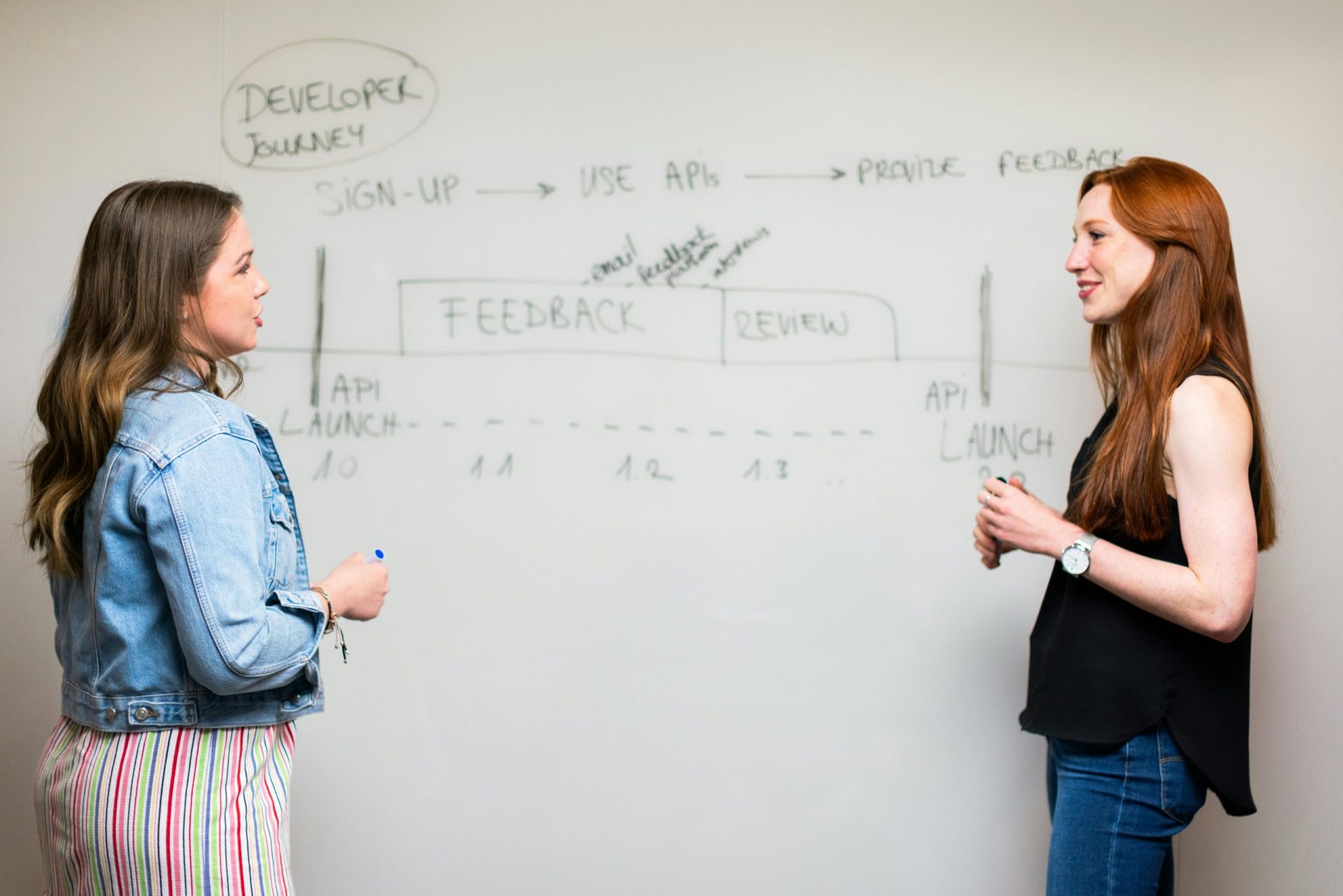Developing or creating software successfully is heavily dependent on its process. Having an ineffective and unreliable methodology affects the quality and efficiency of the output. For businesses leaning heavily on digital technologies, ensuring quality to meet consumer demand delivered at speed is a top priority.
The release of mobile apps and software today is fast enough to respond to the ever-changing consumer demands and it’s all thanks to the utilisation of Agile methodologies by an agile team.
In the early days of software development, creating digital solutions would have taken months or years to build a quality product. It would also take many teams of experts to ensure everything works as intended, and yet program bugs would still be found after market release, and users weren’t always satisfied. Thanks to the creation of agile methodologies though, digital solutions can now be deployed with shorter time-to-market. Agile teams use a more systematic yet versatile development process, which is helping shape the future of software creation today.
In this article, we will elaborate on how the concept of agile became the catalyst of tech innovations.
Pre-Agile Era: Building Software from Scratch
Creating programs date back as early as 1843 when mathematician Ada Lovelace described an algorithm for computing Bernoulli numbers with Charles Babbage’s proposed Analytical Engine. The computer era flourished in the 20th century, with programming languages such as FORTRAN making coding easier. However, by the 1960s, a “software crisis” had computer experts stumped on how to create better programs in time as demand picked up. The evident struggle was due to the following reasons:
- Time constraint – Every project had its own timeline, which required strict scheduling amongst its programming team. However, most software developers back then could not manage to keep up with the demand and deliver the expected product on schedule. · Budget restrictions – Engineers only had an allocated budget for certain projects; hence, their resources were limited. Every mistake or adjustment they make would cost them and the company, and later, the budget might be insufficient to support the project further.
- Quality gap – There was an obvious disparity between the expected and actual outcomes due to various factors. Many software products created in those years did not reach the standard requirements to be considered functional and usable, putting the entire process in vain.
Waterfall Model: A Classic Software Development Lifecycle (SDLC)
In response to the said crisis, engineers and software developers deemed it important to create methods that will efficiently utilise their resources and workforce. This is where the waterfall method entered the picture, designed by Dr Winston Royce in 1970. It caused a paradigm shift and became the earliest framework followed in creating, developing, testing, and maintaining software.
The waterfall model has a number of benefits. First is its simplicity. At first glance, even a person who is not technologically inclined would understand the process because of its linear and logical structure. Every phase has certain requirements, so the goal is direct and concrete from the beginning. This structure made the development process easier to manage.
However, this methodology has its limitations as well. Because of its linear nature, it is less forgiving when it comes to miscalculations in the process and that would mean going back a step or two. Also, testing only happens at the end of the process, which was considered to be risky at the time. Compare to other development processes where testing’s done early, the said procedure is inefficient despite its potential to work because technology is ever-changing, and your software must adapt before the trend changes again.
Agile: The New Development Methodology in the Making
The need for a more efficient methodology with fewer risks and uncertainty increased since then. Fortunately, a group of software developers in Oregon asked the simple question of how to improve the process to deliver new software to market faster. They came up with the Agile Manifesto, which includes 4 values and 12 principles for an iterative approach to software development.
Many organisations found it as a game-changer as it helped improve their functions, processes and, most importantly, their overall mindset. Among the many agile certifications to get, the International Consortium on Agile (ICAgile) is one of the leading accreditation and certification bodies to spread that opportunity worldwide. ICAgile is currently in partnership with 20 international organisations and 4 universities. Primarily, they do 2 main things;
- Facilitate in cultivating the learning objectives formulated by experts to targeted fields and disciplines.
- Help students in enhancing their knowledge and align them to the values and principles of agile through ICAgile-Accredited courses.
We must understand that agile is not just a methodology but a mindset as well. It is meant to instil versatility to everyone dealing with the inevitable changes brought by the uncertainties in their field. Today, the formation of an agile development team is no longer confined to the IT industry. Thanks to ICAgile, it is now integrated into college curricula, executive leadership training, and other lines of expertise.
The Agile Movement: Agile Software Development Expansion Around the World
Agile software development is an umbrella term for all the frameworks following the agile manifesto. This emphasises agile’s flexibility which sets it apart from others. For instance, in every scenario, you can utilise a framework that will best fit and prioritise your goals.
- Scrum Framework for team-centric projects
- Kanban for focusing on the workflow
- Extreme Programming (XP) for concentrating on continuous integration
- Feature-Driven Development (FDD) for long-term, complex projects
- Crystal for a less demanding approach
- Dynamic Systems Development Method (DSDM) for projects with time and budget limitations
These are the most common frameworks under Agile and if you look at each feature, they basically solve the problems raised during the 1960s software crisis. Many companies have adopted agile principles for their development processes and even applied them to other business aspects such as governance and strategy formation.
Indeed, agile development through the years paved the way for greatly advancing software development. The following are the concrete ways of how agile catalysed the software development industry:
- By reducing risk in production – Agile is a flexible methodology that allows developers to correct and even predict mistakes before it gravely affects the final product.
- By granting more control to the developers – The versatility of agile helps developers to prioritise their goals; thus, providing better control and a clearer direction of the system.
- By boosting team morale – In Agile, everyone’s contribution is valued and recognised and therefore maintaining a positive atmosphere among team members.
- By promoting quality and customer satisfaction – Since Agile has an iterative approach to software development, the quality of the output per cycle is evaluated by various stakeholders, from testers to test users; hence, meeting the standards of the product owners and their market.
Conclusion
Because of its effectiveness, it’s no wonder that Agile has been employed in various companies in the software development industry. In addition, agile disciplines have spread to tech projects such as web and mobile app development. Singapore, Germany, and other countries around the world are now popular centres for companies using agile principles, even in other industries.
Our company, User Experience Researchers Singapore., utilises agile software development frameworks, specifically, the ICAgile approach. We are a Singapore-based firm with in-house experts in UI, UX, mobile app design, and agile development. To know more about us, you can always send us enquiries at https://www.user.com.sg/contact/







